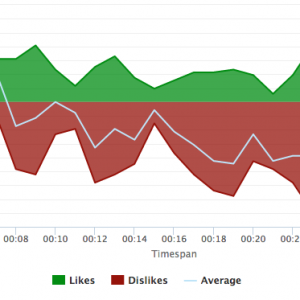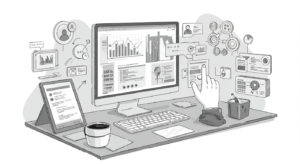Discover the Best Market Research Tool for Your Business

In order to succeed in today’s competitive business environment, it is essential for businesses to conduct effective market research. This involves gathering and analyzing data about customers, competitors, and industry trends, and using this information to make informed business decisions. In this article, we will be discussing the importance of market research, the different types of market research tools available, and the top market research tools that businesses can use to gain insights into their target audience, competitors, and industry trends.
Understanding the Importance of Market Research
Market research is a critical component of any business strategy. It allows businesses to gather information about their target market, including their needs, preferences, and behaviors. By understanding their customers’ needs and desires, businesses can create products and services that meet those needs, leading to increased sales and customer satisfaction.
However, market research is not just about gathering information. It is also about analyzing and interpreting that information to make informed business decisions. Without proper analysis, businesses may miss important insights that could have a significant impact on their success.
Identifying Your Business Goals
Before starting any market research project, it is important to identify your business goals. This could include increasing sales, improving customer retention, or expanding into new markets. By clearly defining your goals, you can ensure that your market research efforts are focused and effective.
For example, if your goal is to expand into new markets, you may need to conduct research on the cultural and economic factors that could impact your success in those markets. On the other hand, if your goal is to improve customer retention, you may need to focus on gathering feedback from your existing customers to identify areas for improvement.
Recognizing Your Target Audience
Another critical component of market research is understanding your target audience. This involves identifying your ideal customer and gathering information about their needs, preferences, and behaviors. By understanding your target audience, you can tailor your marketing strategies and products to meet their needs and increase your chances of success.
For example, if your target audience is millennials, you may need to focus on social media marketing and mobile-friendly website design. On the other hand, if your target audience is retirees, you may need to focus on print advertising and easy-to-use website navigation.
Analyzing Your Competitors
In addition to understanding your target audience, it is important to analyze your competitors. This involves identifying your main competitors and gathering information about their strengths, weaknesses, and marketing strategies. By analyzing your competitors, you can identify opportunities for differentiation and develop strategies to gain a competitive advantage in the market.
For example, if your competitor is known for their excellent customer service, you may need to focus on improving your own customer service to stay competitive. On the other hand, if your competitor is known for their low prices, you may need to focus on offering unique features or services to justify your higher prices.
In conclusion, market research is a critical component of any business strategy. By identifying your business goals, recognizing your target audience, and analyzing your competitors, you can gather important insights that will help you make informed business decisions and achieve your desired outcomes.
Types of Market Research Tools
Market research is a crucial step in understanding your target audience and developing effective marketing strategies. There are several types of market research tools available, each with their own strengths and weaknesses. Let’s take a closer look at each of these types.
Primary Research Tools
Primary research involves collecting data directly from your target audience. This can include surveys, focus groups, and interviews. Surveys can be conducted online, over the phone, or in person. Focus groups are typically conducted in person and involve a small group of people discussing their thoughts and opinions on a particular topic. Interviews can be conducted in person, over the phone, or via email. Primary research is often used to gather specific information about customers’ needs and preferences, as well as to test new products or ideas.
When conducting primary research, it’s important to ensure that your sample size is representative of your target audience. This means that you should aim to include people from different demographics, such as age, gender, and geographic location.
Secondary Research Tools
Secondary research involves gathering information that has already been collected by other sources. This can include industry reports, government statistics, and competitor analysis. Secondary research can be a cost-effective way to gather information about industry trends and competitors.
When conducting secondary research, it’s important to ensure that your sources are reliable and up-to-date. This means that you should use sources from reputable organizations and publications, and that the information you gather is relevant to your specific research question.
Qualitative Research Tools
Qualitative research involves gathering information about customers’ attitudes and opinions. This can include focus groups, interviews, and open-ended survey questions. Qualitative research is often used to gather in-depth information about customers’ experiences and perceptions.
When conducting qualitative research, it’s important to ensure that your questions are open-ended and non-leading. This means that you should avoid asking questions that suggest a particular answer, and instead allow participants to express their own opinions and experiences.
Quantitative Research Tools
Quantitative research involves gathering numerical data about customers’ behaviors and preferences. This can include surveys with closed-ended questions and data analysis. Quantitative research is often used to identify trends and patterns in customer behavior.
When conducting quantitative research, it’s important to ensure that your sample size is large enough to be representative of your target audience. This means that you should aim to include a sufficient number of participants to ensure that your results are statistically significant.
Overall, market research is an essential tool for businesses looking to understand their target audience and develop effective marketing strategies. By using a combination of primary and secondary research, as well as qualitative and quantitative research tools, businesses can gather a comprehensive understanding of their customers’ needs and preferences.
Top Market Research Tools for Businesses
Market research is an essential component of any business strategy. It helps businesses gain insights into their target audience, competitors, and industry trends. With the right market research tools, businesses can make informed decisions and develop strategies for growth and success.
Now that we have a better understanding of the different types of market research tools available, let’s take a closer look at some of the top market research tools that businesses can use to gain insights into their target audience, competitors, and industry trends.
Online Surveys and Questionnaires
Online surveys and questionnaires are a cost-effective way for businesses to gather information about their target audience. Companies such as Spot Trender aid in brand tracking and ad testing to help efficiently grow a business. Online surveys and questionnaires can provide businesses with valuable insights into their customers’ needs, preferences, and behaviors.
For example, a clothing retailer may use online surveys to gather information about their customers’ preferred styles, colors, and price points. This information can help the retailer make informed decisions about which products to stock and how to price them.
Focus Groups and Interviews
Focus groups and interviews are qualitative research methods that are often used to gather in-depth information about customers’ attitudes and opinions. These methods involve gathering a small group of customers and exploring their thoughts and experiences in a more intimate setting.
For example, a software company may conduct focus groups to gather feedback on a new product. By listening to customers’ opinions and concerns, the company can make improvements to the product before it is released.
Social Media Analytics
Social media analytics can provide businesses with valuable insights into their customers’ behavior and preferences. By analyzing social media activities such as likes, shares, and comments, businesses can gain valuable insights into customer sentiment and engagement.
For example, a restaurant may use social media analytics to track customer reviews and feedback. By monitoring customer sentiment, the restaurant can identify areas for improvement and make changes to their menu or service to better meet their customers’ needs.
Keyword Research Tools
Keyword research tools can help businesses identify the search terms that potential customers are using to find products and services similar to theirs. By optimizing their website and marketing materials for these keywords, businesses can increase their visibility in search engines and drive more traffic to their site.
For example, a marketing agency may use keyword research tools to identify the most relevant search terms for a client’s business. By optimizing the client’s website and marketing materials for these keywords, the agency can help the client rank higher in search engine results and attract more potential customers.
Competitor Analysis Tools
Competitor analysis tools can help businesses gather information about their competitors’ strengths, weaknesses, and marketing strategies. By analyzing this information, businesses can identify opportunities for differentiation and develop strategies to gain a competitive advantage.
For example, a technology company may use competitor analysis tools to gather information about their competitors’ product features and pricing. By identifying gaps in the market, the company can develop new products or features that offer a unique value proposition to customers.
In conclusion, market research is a critical component of any business strategy. By understanding their customers’ needs and preferences, as well as their competitors and industry trends, businesses can make informed business decisions and increase their chances of success. By using the right market research tools, businesses can gain valuable insights into their target audience, competitors, and industry trends, and develop strategies for growth and success.







